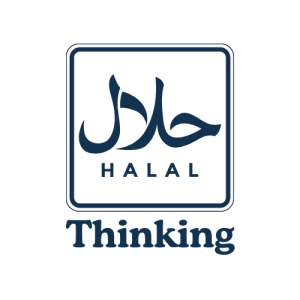My First Encounter with the Halal Symbol in the USA
When I moved to the U.S., I was excited—but also nervous about maintaining my religious diet. Back home, everything was familiar: halal butchers, clear labeling, and a community that understood. But in the USA? I was on my own.
One day, while buying frozen chicken, I saw a green logo that said “Halal Certified by IFANCA.” I hesitated. Was it legit? Could I trust it? I googled it right there in the aisle. That moment introduced me to the world of halal certification agencies in the USA and their trust marks.
From that day on, I began to notice different versions of the halal symbol on food USA—some from HFC-USA, some from ISNA, and others I had never seen before. But not all were equal, and I quickly realized there were things I had to learn the hard way.
Problems I Faced While Searching for Halal Symbols
1. Confusing or Missing Labels
Not every halal product in the USA comes with a symbol. Some just write “halal” in plain text, and others don’t mention anything at all—even if they’re certified. This inconsistency made it tough to shop confidently.
2. Trust Issues with Unfamiliar Logos
At one point, I bought beef labeled “halal” from a local store. A friend later told me that the certifier on the label wasn’t recognized by any major Muslim organizations. That shook my trust completely.
3. Lack of Awareness Among Store Employees
I once asked a store manager what the halal logo meant, and he replied, “I think it just means no pork.” That answer was not only wrong—it was dangerous misinformation.
Suggestions and Solutions That Helped Me Shop Halal with Confidence
1. Learn the Most Trusted Halal Certification Symbols
- IFANCA (Islamic Food and Nutrition Council of America)
- HFC-USA (Halal Food Council USA)
- ISNA (Islamic Society of North America)
These are recognized by many Muslim communities and international bodies. If I see their logo, I usually feel confident that the product meets proper halal standards.
2. Use Official Websites to Verify Symbols
I often check halal certifiers’ websites to verify the products they certify. For example, Halal Food in the USA has helpful information and links that keep you up-to-date.
3. Use Muslim Community Groups or Apps
Joining local Muslim Facebook groups and downloading apps like “Scan Halal” made a huge difference. I could scan a product and instantly see if it was halal or not, based on its barcode and certification.
4. Reach Out to Brands
Sometimes I emailed or messaged companies directly. If they couldn’t provide clear answers about their halal certification, I didn’t buy their products. It sounds like work, but over time, it became easier.
Expert & Authentic Insights About the Halal Symbol on Food USA
According to the Islamic Food and Nutrition Council of America (IFANCA), halal certification involves inspecting ingredients, processing facilities, and even packaging materials. The halal symbol isn’t just a sticker—it’s the result of an auditing process.
Experts from Halal Food Council USA (HFC-USA) also stress that halal certification is a legal and religious responsibility. It helps protect consumers and ensures full compliance with Islamic guidelines.
Moreover, U.S. regulations require food labeling to be honest and not misleading. So, if a brand is falsely claiming halal, that’s grounds for legal action—a comfort for many of us who rely on the symbol.
Frequently Asked Questions About the Halal Symbol in the USA
What does the halal symbol look like in the USA?
It varies by certifier, but it usually includes the word “HALAL” in Arabic and English, sometimes with a crescent moon and star. Always check for the certifier’s name.
Can you trust all halal symbols on food in the USA?
Not all. Stick to recognized certifiers like IFANCA, HFC-USA, and ISNA. Unknown or self-declared labels should be researched first.
Are halal symbols required by law in the USA?
No. Halal labeling is voluntary, but if it’s included, it must be truthful. That’s why working with trusted certifiers matters so much.
Where can I learn more about halal food options in the USA?
One helpful resource I recommend is this detailed guide: Halal Food in the USA.
Final Thoughts: My Journey with Halal Symbols
Today, spotting the halal symbol on food in the USA gives me peace of mind. It took time, research, and a few missteps to get here, but now I can shop with confidence. If you’re just starting your halal journey in the U.S., don’t worry. You’ll learn, just like I did.
The key is to stay informed, be cautious, and always double-check when you’re unsure. Trust the process, trust the symbol—but most of all, trust yourself.



